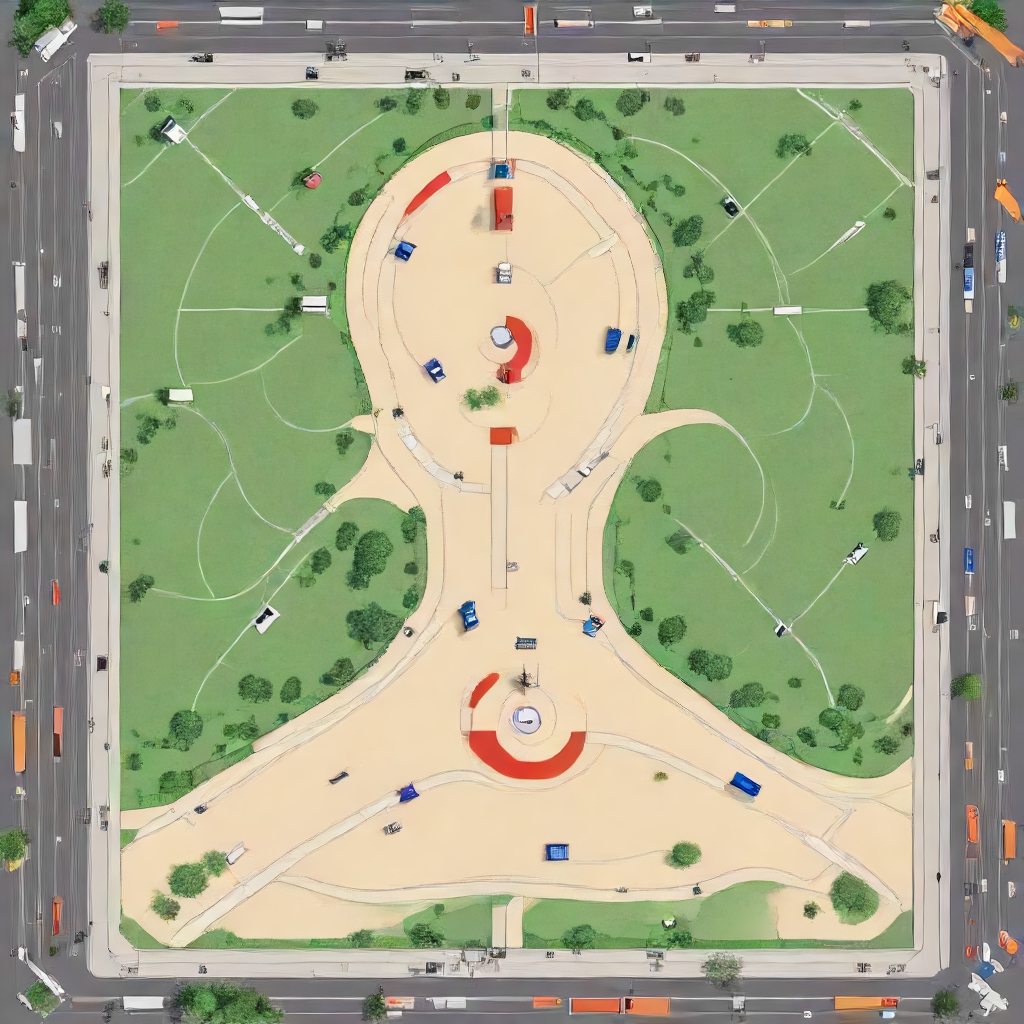Muahammad was a longtime office-mate and during that time we had many deep and divergent chats about academia, design, Research, and the broader world. Often we could get into the detail of being an African scholar, and many related facets and entanglements. Through attrition (he sat next to it) Muhammad spent a long time looking at a poster we produced as part of the Trust me? I’m an autonomous machine project, and I’m delighted that it influenced him to build on those ideas in this recent work, Trust Me, I Am an Intelligent and Autonomous System: Trustworthy AI in Africa as Distributed Concern.
The blog that follows is a reflection from Muhammad’s point of view after spending some years in Imagination and observing the progress of Design Research Works.
January 2025
Dr Muhammad Adamu
I have recently transitioned from my role as a Senior Research Associate for the Design for Digital Good Special Interest Group at Imagination Lancaster, to a Research Fellow in Responsible Innovation for Health at the University of Nottingham.
As a member of the Responsible Digital Futures Group, the question of reimagining and reinventing digital futures becomes central to my work. As interdisciplinary researchers—particularly those working adjacent to AI—we are often bombarded with catchy words such as frontier AI, responsible AI, trustworthy AI, and so on. These become the discursive frames that direct our thinking about research and innovation in today’s industrial societies.
So, when Joe asked me to write a blog reflecting on how the Design Research Works project influenced my thinking during the years I sat in the Imagination Lancaster office, I began to ponder on some of my earlier research work and current position through the lens of identity. Who’s at the frontier of AI research and innovation, who’s responsible for directing and enacting the dynamic of the global AI ecosystem, who decide when AI as a collective of sociotechnical systems are effective, secure and trustworthy? From my position as an Early Career Researcher (ECR) these questions ask who has authority in universities’ cognitive classes and as part of the new clerisy (or ‘legitimizers’ in the digital realm1). These have become base themes of my research, and with them in mind, I have chosen to write this blog about Design Research (particularly through the filter of the Design Research Works project has informed my thinking and writing about a range of topics.
I am trained as a computer scientist, and an ambitious early career researcher in African human-computer interaction and artificial intelligence, and observing the progress of Design Research Works, I noted how methods and techniques of Design Research have wider outreach and impact across communities of practices. From engaging with some of the outcomes of the project, I experienced with effect the roles of design researcher - similar to how Barthes’ “The Death of the Author” questioned the traditional authority of the author [4] - as instruments of modern transformation. As Joe once argued, “there is no archetype for how to define a Design Researcher, nor a clear pathway to become one”. This is akin to Howard Becker’s sociological study of marijuana users where becoming a user requires a progression through various stages – learning to get the effects, learning to recognize the effects and learning to appreciate the effects of the instrument [1]. In African HCI, both becoming and being a researcher and practitioner required a progression through discursive spaces and norms of knowledge production and dissemination – one ought to decide on whether taking side is a worthy intellectual pursuit, for or against a proposition, to be or not to be in the academy. As an emerging researcher who aspires to epistemic justice and equality, I choose to problematize the self as a discursive entity worthy of scholarly and designerly considerations. In other words, becoming a design researcher entails a continual process of becoming and being, of discovery, disappearance, transformation, and so on.
Although Design Research might not have provided the analytical instruments to explore the complexities of becoming an ECR, the interview box led to ideas around the materiality of suitcase words such as the African, Black/black, and the Other as qualifiers for the specific dimension of being human. Using the metaphor of question bridge, I further recognized the implication of caste, class, and colour in design and research work.
The interview box narrative inspired a critical engagement with the subtle tensions prevalent in the domestication of diversity-sensitive approaches to HCI research when important issues such as language, power, and knowledge relations are taken for granted. From the experimental engagement with race as a mundane concept of society, it becomes clearer to me that race is a prosaic idea, a practical societal affair. I argue that the idea of race as a social construct came out of the pseudoscientific tradition of European economies’ attempt to gain an advantage in an economic “contest”—with racism as its unintended consequence.
In 2023 I wrote a commentary about critical race theory for HCI where I foregrounded the self as a subjugated body of work, making the personal political by reflecting on some of the implications of the decision to engage (or not) scholarly with critical race theory (CRT). As an African HCI researcher, the issue of race and racism (or the new form of diversity) called upon in HCI appears abstract, but more so, dismissive of other forms of social recognition (e.g., ethnicity, religion, gender, and class.) In short, words have expanding meaning beyond surface manifestation: As Heskett has demonstrated, “Design is to design a design to produce a design” [3, p. 3], uses the term in four different ways; first as a noun (the field of Design), then as a verb (the practice of design), then as another noun (a design concept), then again as a more specific noun (an instance of that concept). This notion also opens Chapter 3 of the Permission to Muck About documentary film about Design Research.
The blog, research paper, and online space represented in “this is not a paper” explores a different facet of HCI conference and publication culture: with new modalities of doing and sharing research in tracks such as critiques, late breaking work, and alt.chi becoming the new mainstream avenue for more engaging research papers. By introducing something new and novel to the well-established syntax of publication in HCI, Joe and Colleagues opened up avenues for making the personal public, of fabulating and fabricating new practices for the wider academic community.
Engaging with the This is not a paper project, I was motivated to explore how writing the self as a subjugated body of work into HCI practice is a matter of significant political concern founder on normalized exercise of power in contemporary discourse. I pondered on the material utilities of positioning the self in academic HCI discourses for example, issues around authorship and ownership, language games and prose competition, academic exploitation and exploration, labouring and rewarding, peer review and academic gatekeeping and so on. There is a resonance across the ideas behind This is not a paper, the disruptive potential of Design Research, and Bike Steve’s liberation script ‘I write what I like’ that is exemplified in the critique “I Write What I Like and How I Like”. It presents a forceful case for revolting against the absurdities of zero-point epistemologies of Western sciences that happened to be a central tenant of HCI knowledge production and dissemination practices. Together, across all of this, what stands out is the Wittgensteinian notion of “the fly the way out of the fly bottle”.
As it appears, Ludwig Wittgensteinian’s evolving philosophy doesn’t set out to provide a concrete outlook to understanding the social world but rather emphasizes how the description of social phenomenon can free our understanding from the bewitchment of language. If we follow this logic, we might come to understand how engaging in the knowledge economy more broadly entails producing and sharing commodifiable ideals based on our inate abilities to resource/peddle the work of others. And admittedly, in this case, Design Research is adept at this.
Design Researchers are not an archetype!
As much as I do not consider myself a Design Researcher by training its practices have acted as an expression of Stanley and Lehman’s non-objective Art of breeding Art [2]. Some things happen out of a whim, Nobel Prize-worthy ideas can surface whilst in a shower, in airport transit, or at the gym. Observing the progress of the Design Research Works project over a couple of years felt like it fertilized some of these moments in my journey.
For example, the Shape of Trust poster hangs next to my desk in the Imagination Lancaster Lab. Often, I look up at the poster in amazement at how we (humans, users, and designers) trust autonomous machines. Even with the black box issues associated with artificial intelligent systems, we’re expected to trust in the computational power of the machine. With computer-mediated interfaces, we’re expected, by some abstract convention, to trust ourselves to reason and regulate our interactions with the machine. From our everyday interactivity with digital technologies, we assume or prescribe trust in the machine, an illusion that gets enacted in interfaces as effective and reliable. The poster and video led to extensive discussions on how Trust might be constructed and approached differently across cultures.
Building on the UKRI Trustworthy Autonomous System Hub-funded Trust Me? I’m an autonomous machine project, our upcoming chapter Trust me! I am an Intelligent and Autonomous System: AI in Africa as Distributed Concern [5] adopts the Latourian “Distributed Concern” that the Shape of Trust poster talked about. In the chapter we argue that operationalizing trustworthy AI as a distributed concern - which is political, economic, pedagogical, technical, and so on – entails a continual process of reconciling value(s). Our concern wasn’t to develop an extended Master Narrative of Trust across African communities, but rather to further complicate the simplistic conception of Trust as given, as something relationship, contextual, at a point of scale and as a noun and a verb.
Permission to Muck About explores what, when, why and how of Design Research is valuable in a world that is wicked, polarized, and unequally divided. This blog is extending some recognition to the Design Research Works project and the examples above and relates them to my journey as an African ECR working in HCI in the UK. The film was the outcome of 3 years long work on what the world can gain from Design Research and Practice, which in subsequent releases, will proactively include less prominent voices across the globe, an illustration of the utilities of Design Research orientation and practices. As an ECR, the engagement with different facet of the Design Research Works has further solidified my striving to become a problematic scholar (standing on the shoulders of the likes of Michel Foucault, Edward Said, and Ngũgĩ wa Thiong’o to mention a few), however, I am quite aware of the “myth of representation” in identity politics. With identity as a base theme of my earlier research, this blog is a demonstration that Design Research Works: there isn’t a clear pathway to become Design Researcher, Design Research is an “epistemological machinery” for making sense of the world, and conversations with Joe (as a friend and a mentor) acted as the ladder for showing “the fly the way out of the fly bottle”.
Notes:
[1] Becker, H. S. (1953). Becoming a marihuana user. American Journal of Sociology, 59(3), 235-242.
[2] Stanley, K. O., & Lehman, J. (2015). Why greatness cannot be planned: The myth of the objective. Springer.
[3] Heskett, J. (2005) Design: A very short introduction. Oxford University Press.
[4] Roland Barthes. 1977. Image-Music-Text. Fontana Press, London. Includes the essay “The Death of the Author”.
[5] Nkwo, M.S., Adamu, M. (2025). Trust Me, I Am an Intelligent and Autonomous System: Trustworthy AI in Africa as Distributed Concern. In: Eke, D.O., Wakunuma, K., Akintoye, S., Ogoh, G. (eds) Trustworthy AI. Palgrave Macmillan, Cham. https://doi.org/10.1007/978-3-031-75674-0_4
-
The clerisy denotes a collection of intellectuals/artist ordering society with their ideas and knowledge. ↩





